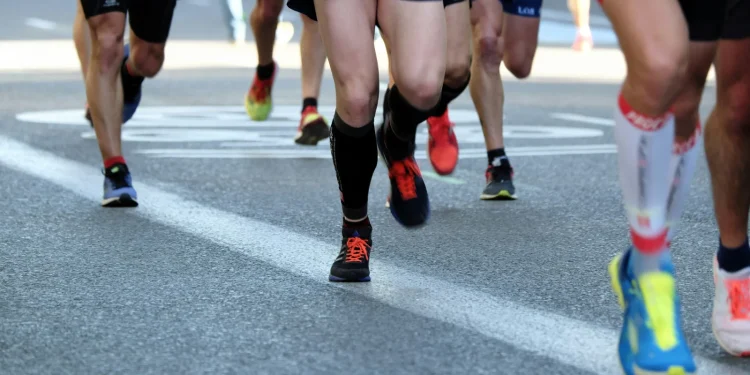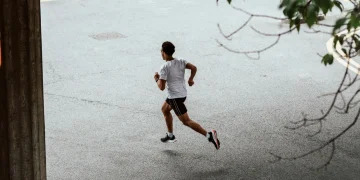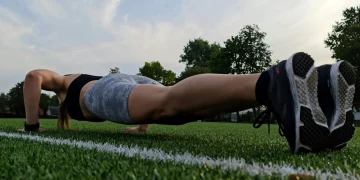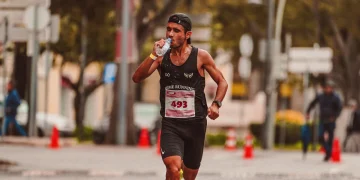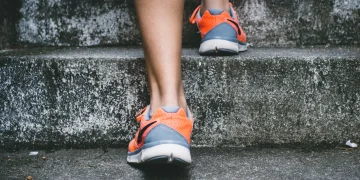Pain in the shins, knees, or hips is often caused by lateral (oblique) forces that put stress on joints and soft tissues. One common cause is excessive crossover in a runner’s stride, where the feet cross the midline of the body more than they should. This issue typically stems from instability, weak hip abductors, and/or overly tight inner thigh (groin) muscles.
Ideally, your stride should show minimal crossover, no more than 0–2 cm. That means your right inner ankle bone (medial malleolus) shouldn’t pass more than 2 cm over the path of your left ankle.
In the example shown, the left foot crosses nearly 2 inches past where the right ankle tracked—a clear case of excessive medial crossover.
This kind of movement puts the ankle, knee, and hip joints at sharper angles than they’re built to handle. As a result, it increases the risk of strain, inflammation, and soft tissue overload throughout the kinetic chain.
How to Fix Excessive Crossover:
Step 1: Improve flexibility
Make sure your glutes, hip flexors, hamstrings, and lower back are mobile and pliable. Tightness in these areas can pull your legs inward, making it harder to maintain proper leg alignment during your stride.
Step 2: Strengthen hip abductors
Incorporate exercises that target the muscles responsible for stabilizing the outer hip and pelvis:
- Hip hikes
- Side planks with knee-to-chest movement
- Lateral tube walking
- Single-leg squats (ensure the knee stays aligned and doesn’t cave inward during both the downward and upward motion)
Step 3: Practice wide-step running
Start integrating short bursts of wider strides into your runs. Begin with 6 sets of 5 seconds and gradually build up to 6 sets of 60 seconds. The goal is to run with your feet tracking just outside of a straight line—about one inch of space between each foot.

